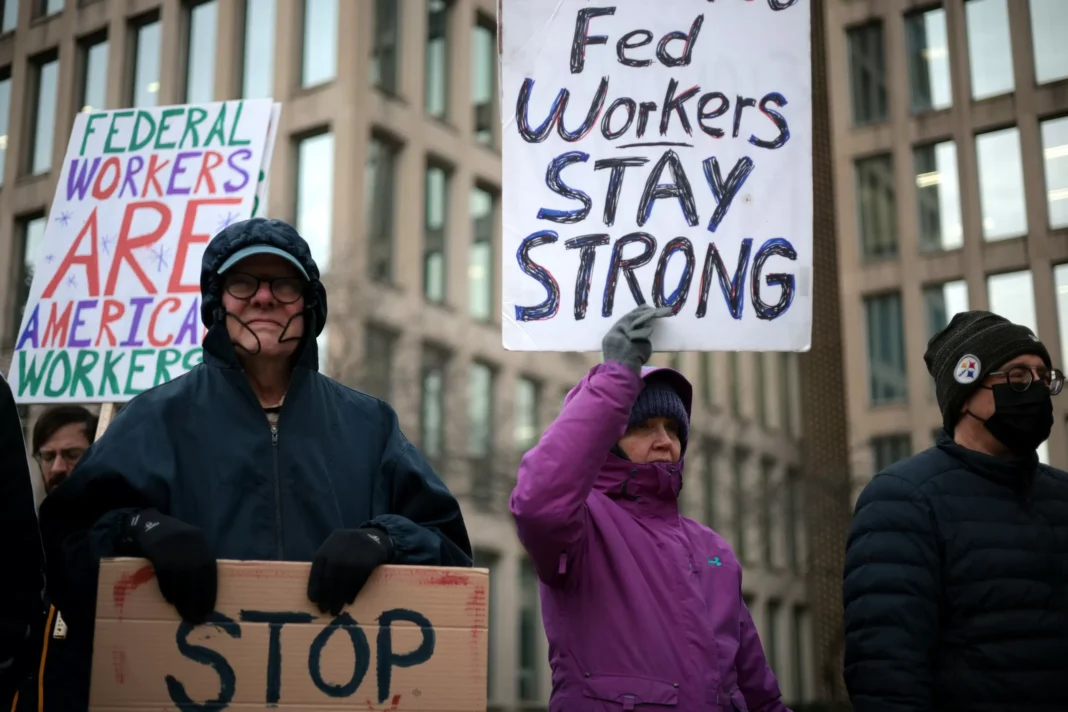In a bold move, President Donald Trump has announced an Executive Order that would effectively strip federal workers of their collective bargaining rights. This marks the latest attack on federal unions by the Trump administration, with the goal of reducing the influence and power of these unions.
With this Executive Order, President Trump aims to limit the scope of collective bargaining for the majority of federal workers. This includes employees of various government agencies, such as the Department of Veterans Affairs, the Department of Education, and the Department of Homeland Security, among others.
This move has been met with strong criticism from federal workers and their unions, who see it as an attack on their rights and a way to weaken their influence. However, President Trump argues that this move is necessary for the efficient functioning of the government.
According to the Executive Order, the administration claims that the current collective bargaining system has become a hindrance to the government’s ability to deliver efficient and effective services to the American people. They argue that the bargaining process has become overly complicated and time-consuming, resulting in increased costs and delays in implementing policies and projects.
The administration also believes that the current collective bargaining system limits the flexibility of government agencies to address pressing issues and respond to changing circumstances. With this Executive Order, President Trump aims to give government agencies more freedom to make decisions and take action without being bound by collective bargaining agreements.
This decision has been met with mixed reactions, with some applauding the move as a step towards improving government efficiency, while others see it as a direct attack on the rights and livelihoods of federal workers.
On one hand, the administration’s move to limit collective bargaining can be seen as a means to address the inefficiencies and delays that can occur in the current system. By reducing the level of bureaucracy and streamlining decision-making processes, government agencies can operate more efficiently and deliver better services to the American people.
Furthermore, this Executive Order promotes accountability within government agencies. With less interference from collective bargaining, agencies will be responsible for their own actions and decisions, resulting in increased efficiency and improved performance.
On the other hand, this move has raised concerns about the potential negative impact on federal workers and their unions. Collective bargaining has long been a vital tool for workers to negotiate fair wages, benefits, and working conditions. By limiting their ability to bargain collectively, many fear that the administration is taking away their voice and bargaining power.
Moreover, this Executive Order could have financial implications for federal workers, as it may lead to wage cuts, reduced benefits, and increased workloads. This could have a significant impact on the morale and motivation of federal workers, ultimately affecting the quality of services they provide.
In addition, this decision could also have a ripple effect on the private sector, as many companies look to the government as a model employer when it comes to employee rights and benefits. The weakening of collective bargaining for federal workers could set a precedent for similar actions in the private sector, further eroding workers’ rights.
In conclusion, President Trump’s Executive Order to limit collective bargaining for federal workers has sparked a debate about the role of unions and the efficiency of the government. While some see it as a necessary step towards improving government efficiency, others view it as a direct attack on the rights of workers and their unions. Only time will tell the true impact of this decision, but one thing is certain, it has brought the conversation about workers’ rights and the role of unions to the forefront.


